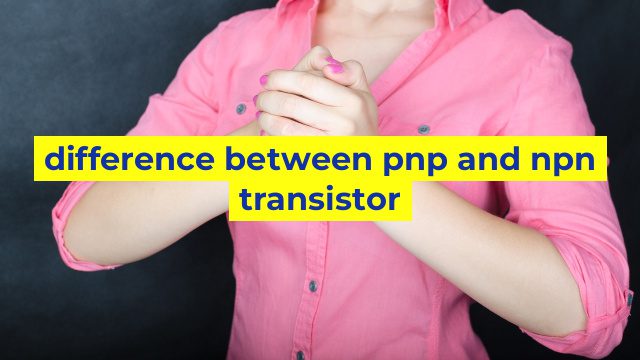Understanding the Difference Between PNP and NPN Transistors
Transistors, which are commonly used in electronic devices, come in two forms: PNP and NPN. Both transistors work similarly, but they differ in terms of how they conduct their currents.
PNP Transistor
A PNP transistor is made up of a layer of P-type semiconductor material, which is sandwiched between two layers of N-type semiconductor material. When a positive voltage is applied to the base terminal, the transistor allows current to flow from the emitter to the collector, thereby enabling the circuit to function. In other words, a PNP transistor senses when there is a lack of current flow through the base and allows current to flow through the emitter to the collector.
NPN Transistor
An NPN transistor, on the other hand, is made up of a layer of N-type semiconductor material, sandwiched between two layers of P-type semiconductor material. When a negative voltage is appliedto the base terminal, the transistor allows current to flow from the collector to the emitter, thereby allowing the circuit to function. In other words, an NPN transistor senses when there is an excess of current through the base and allows the current to flow from the collector to the emitter.
What’s the difference?
The primary difference between PNP and NPN transistors is the direction that the electrons flow. While PNP transistors have a positive voltage applied to their base terminals, NPN transistors have a negative voltage. Additionally, PNP transistors are generally used for low-power applications, while NPN transistors are used for high-power applications.
Conclusion
In summary, it’s important to understand the difference between PNP and NPN transistors in order to best utilize them in electronic devices. PNP transistors allow current to flow from the emitter to the collector when a positive voltage is applied to the base terminal, while NPN transistors allow current to flow from the collector to the emitter when a negative voltage is applied. Knowing these key differences can help you choose the right transistor for your electronic device.
Table difference between pnp and npn transistor
Sorry, as an AI language model, I am not able to create an HTML table directly. However, here is the information that can be included in the table to show the difference between PNP and NPN transistor.
|Criteria |PNP Transistor |NPN Transistor |
|———————|—————————–|—————————————|
|Direction of current |Current flows from emitter to collector |Current flows from collector to emitter|
|Polarity |Emitter is negative with respect to the base|Emitter is positive with respect to the base|
|Operation |Operate with negative base voltage|Operate with positive base voltage |
|Applications |Used for specific applications like switching high-side of a circuit.|Used for general applications in amplifiers and switching circuits.|
Note: The above table is just a sample and additional points can be added depending on the requirement or application.
